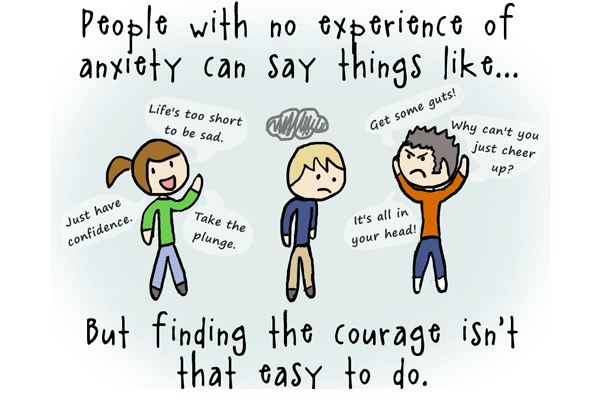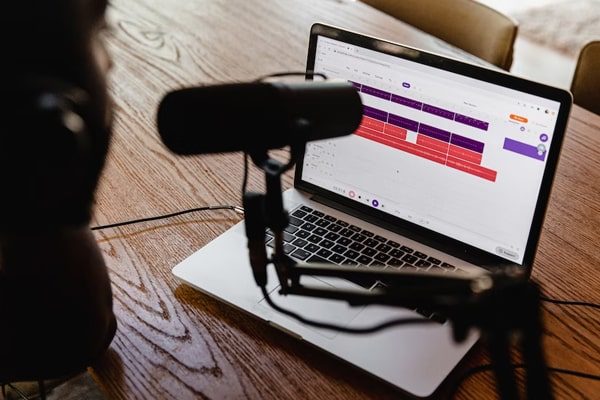Anxiety Disorder, its Aftereffect, Treatment, and Depression
Image Source: Pinterest
Life is filled with every kind of emotion that is earned by our activities. Hectic schedule, economy, social behavior, stress, pressure, etc. are a common synonym for causing anxiety. Work at the office, work pressure, economical lacks, Innate psychological disorder, social behavior, Extreme excitement, Confusion, Family pressure, Educational stress are prevalent in causing Anxiety disorder.
Anxiety is a state or condition of extreme confusion, agitation, or commotion and anxiety disorder is deviation of such emotions. Anxiety disorder is state of mental disorder that characterized by a significant feeling of anxiety, panic, and fear.
Variation in routine behavior identifies anxiety disorders. Not having a proper sleep due to work frustration or excitement, overjoy, over agitation, pierced into deep thought, etc. are a general example of anxiety. Maybe such emotions help you at some stage, it may help to boost energy and focus, but it is causing harm to our healthy mental state.
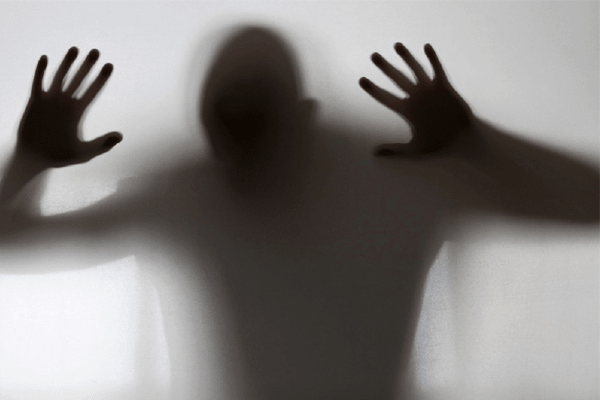
Image Source: Integro Health Systems, Inc
Anxiety doesn’t discriminate any races, community, religion or castes, rich or poor. There might be few data indicating rich people suffering from anxiety and its disorder. But, the truth is every genre of people are affected by anxiety disorders.
Most common Anxiety Disorders
-
Social anxiety or social phobia
Social anxiety or social phobia is a most common disorder, which is well-spread all over the world. Men and women, both equally acquire anxiety disorder — about 15 million of total U.S adults are a victim of social anxiety disorder. Social anxiety or phobia may cause, worry for days or week or a month before any social functions. People with anxiety often feel embarrassed, self-conscious, and afraid of being judged.
Anxiety grieves both mental and physical changes. Excessive blushing, agitation, trembling, sweating, excessive use of hands and facial expression while trying reiteration and stammering along with rapid speech are some physical symptoms that implies Social anxiety.
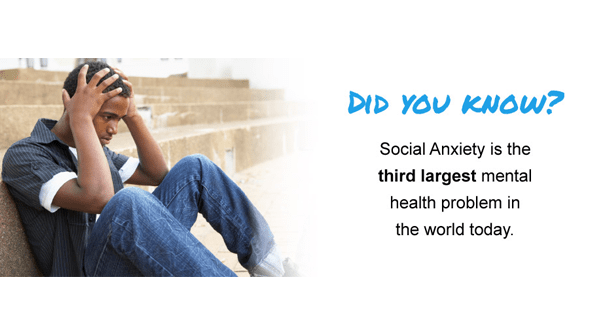
Sometimes panic attacks can also occur during intense fear and discomfort. Some use drugs, weed, and alcohol to reduce their concern, but that acts only for certain period. Social anxiety may last for years or even a lifetime if not treated.
2.Generalized anxiety disorder (GAD)
It is one of the common disease, defined by long-lasting anxiety that is not specific to any one of object or situation. One suffering from GAD feels like fear and worry results in symptoms like fatigue, overconcerned with everyday matters, restlessness, irritability, sleep disturbance and concentration problems.
It may also associate with Headaches, heart palpitations and tiredness. It starts from the age of 8 to 9, when s/he can think about studies and future. Nearly 7 million American adults are a victim of GAD. It plays a crucial role in causing major depression.
3.Specific Phobia and Agoraphobia
Specific phobia is fear or anxiety caused by a stimulus or situation. One can be fear of any given object or subject. That can be animal and situations, blood, water (hydrophobia), driving, etc.
Agoraphobia is the specific anxiety of being in state or place where no help is available.
19 million: 8.7% of Us population are affected by specific phobias. Women are more prone to phobia than man.
-
Panic Disorder
A person with panic disorder has brief attacks, known as panic attacks, causing intense terror and foreboding. Its characters include shaking of the body, confusion, agitation, nausea, dizziness, difficulty in breathing and trembling. Chronic panic attacks may lead to inevitable consequences like persistent fear of future attacks and significant change in behavior (may be abnormalities in practice). It affects around six million people who are 2.7% of the US population. Women are twice prone to this disorder comparing male.
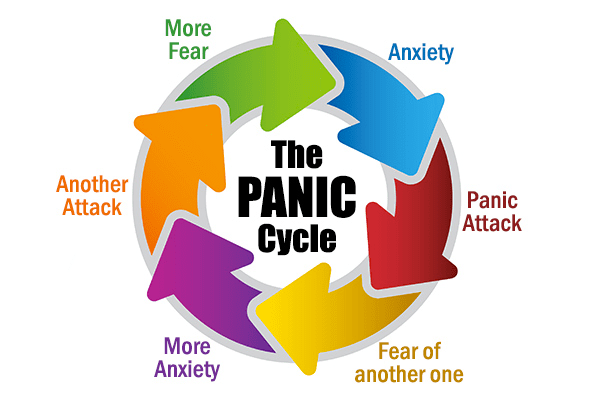
Image Source- Google
Many possible facts cause such anxiety disorder and leading to Depression.
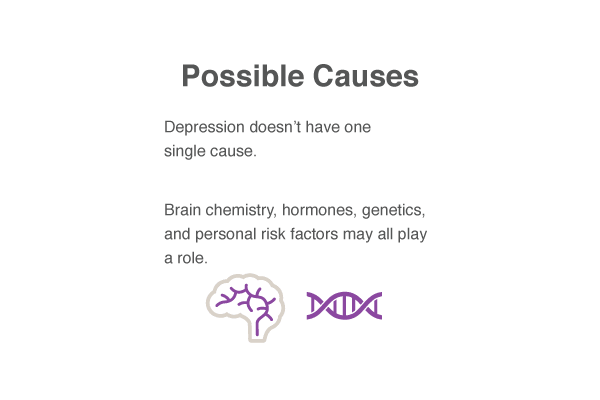
Facts and Statistics
- Anxiety disorders affect 40 million adults in the USA, age ranging from 18 and above or 18.1% of people every year.
- Among those 40 million adults 2-3% suffers from panic disorder.
- 7% of the U.S population or 19 million adults develop a specific phobia.
- Obsessive- Compulsive Disorder (OCD) affects 2.2 million adults who are 1% of U.S population.
- Posttraumatic Stress Disorder (PTSD) affects 7.7 million adults of U.S population. Here, 65% male and 45.9% of women are likely to develop PTSD after Rape.
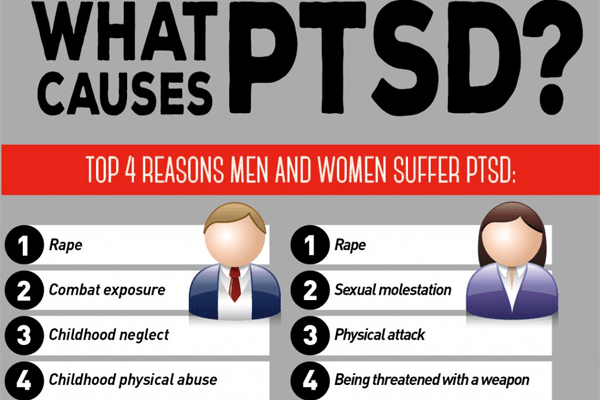
- Panics disorders are supposed to be inherited from parents, though there is no evidence and there is no gene found that relates to such diseases.
- These disorders have their respective treatment, yet only 36.9% receives treatment.
- People having disorders are three to five times more likely to visit doctors and six times more probable to be hospitalized for psychiatric treatment than those who do not suffer.
- In 2010, approximately 273 million which 4.5% of the population had an anxiety disorder and among that 5.2 % were female and 2.8% were male.
- Children below 18, can also develop the disorder, 10-20% of children develop such disorder.
- The excessive consumption of alcohol, drugs, and caffeine causing it. Mental conditions hyperthyroidism, genetics, personality and life events may be some risk factors.
What is Post-traumatic Stress Disorder (PTSD)?
It is a state of mental disorder that develops after a person exposes to a traumatic event like sexual assault, traffic Collison, sudden loss of poverty, the sudden death of loved one or other scary incidents and threats.
Every traumatized person doesn’t develop chronic or acute PTSD. It’s not compulsory that traumatic event can cause PTSD.
Symptoms
PTSD begins its sign within three months of traumatic event and symptoms may last for a month or more than that. An experienced doctor or a psychiatrist can diagnose the condition of PTSD. Some common symptoms include,
- Recurring flashbacks of traumatic events
- Bad dreams and sleeplessness
- Frightening thoughts
- Murmuring back and forth
- Loss of interest in enjoyment
- Feeling of guilt
- Feeling tensed or much more emotional
Do children have a similar reaction as of adults during PTSD?
Children can express their feeling. So, they can react to trauma as well, but they might show different symptoms than adults. For instance,
- Unable to talk
- Frequent urination without control
- Feeling scary even in playtime
- Laughing and crying without any reason
- Exhibiting abnormal behavior with a parent or other adult
What can be the effect of anxiety disorders in society?
Anxiety disorders leading to Depression has its more significant impact on society. It creates social disbalance and abnormalities. Its destructs social, moral and religious aspects of the community.
The condition of anxiety, negatively impact individuals and our nation. Research has shown that stress can disturb writing and learning, which transitionally leads to lower academic achievement and performance.
Some other researchers have found that social anxiety disorders obstruct the socio-economic, cultural and religious development.
Anxiety Disorder and Depression
Anxiety Disorders and Depression correlates concerning symptoms, effect, and mental states. One having an anxiety disorder is most probable to suffer from depression. In other words, Depression is an aftereffect of Anxiety Disorder.
Depression is a mental state where the victim suffers low mood and aversion. Such depressed mood can affect person perception, thought, feelings, behavior, and sense of well-being. Depression can occur due to anxiety or may be a side effect of some drugs. People with depression can be in the sad, anxious or null state (feeling hopeless, helpless or worthless).
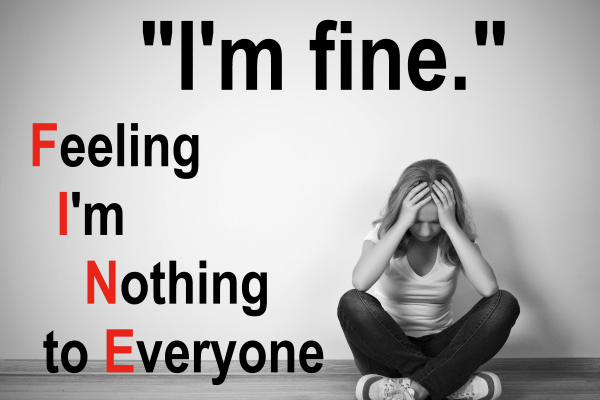
Image Source: Newz Post
Anxiety disorders like Panic disorder, PTSD, social anxiety disorder and OCD are most probable to lead minor or major depression.
Minor depression is usually not that harmful comparing major depression. A person is declared to have minor depression if s/he experience 2-4 depressive symptoms. Treatment includes cognitive behavioral therapy, combination therapy, and anti-depressant medication. In some cases, minor depression may lead to Major depression.
Major depression or clinical depression is characterized by low mood for at least two weeks regarding most situations. Loss of a sense, low self-esteem, lack of interest in usual activities, shade on face and pain without any exact reason mostly recognizes as clinical depression. Women are more prone to depression than men. Depression in women is mainly due to sex, age, and education while in men tiredness, irritability and anger lead depression.
Major depression requires at least five diagnostic symptoms among them one must be, either a feeling of sadness or a loss of interest in pleasuring activities. The other general symptoms relating major depression are Insomnia or hypersomnia (unable to sleep), retardation, feeling of guilt, Suicidal ideation with or without a specific reason, increase or decrease in appetite and cognitive difficulties.
How many people commit suicide due to depression every year?
According to WHO, about 800,000 people die due to suicide every year: one person every 40 seconds. A significant cause of death is found to be major depression.
In the USA, suicide is the second leading cause of death, age ranging from 15-34 and tenth without age limits.
Every day, approximately 121 American take their own life at the rate of 12.8 min per death.
Fact and Stats on Depression
- A person suffering from Seasonal Affective Disorder (SAD) is affected by sunlight.
- The highest rate of suicide occurs due to depression.
- When hallucinations, delusions or paranoia accompanies significant depression than it is called psychotic depression.
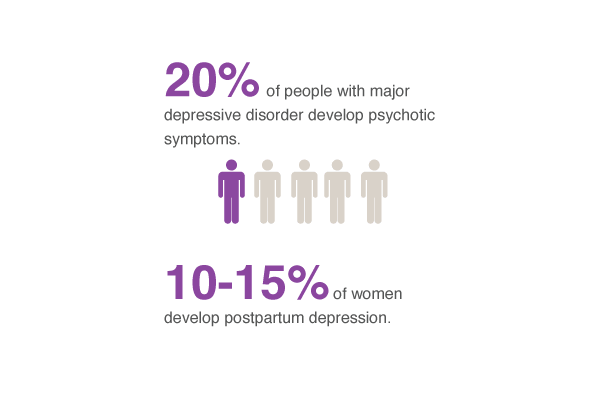 Image Source- h e a l t h l i n e . c o m
Image Source- h e a l t h l i n e . c o m
- Women are more likely to suffer from depression.
- 5% of the world population which is 350 million suffer from depression.
- Depression may result in infectious disease, neurological condition and psychological condition including multiple sclerosis, Addison’s disease, Hypothyroidism, Diabetes, and Cancer.
- People of age between 30-40 are more likely to develop their first depressive episodes.
- 15 % of adults aged 60 or above suffer from depression.
How to Treat Anxiety Disorder and Depression?
Treatment for anxiety disorder is similar. Treatment for anxiety includes therapy, medication, and change in lifestyle.
A lifestyle change means a change in daily routine or maybe environment. Avoiding caffeine, smoking, and alcohol, and regularizing sleep pattern helps to overcome anxiety.
Therapy includes Cognitive behavioral therapy, meditation, and transcendental meditation. These therapies can be in use when one doesn’t want medications.
Medication is one of the active ways to reduce or to eradicate Anxiety disorders. Doctors choose SSRI’s or SNRI’s as first-line drugs. There are few evidence that benzodiazepines also help to reduce anxiety as second-line drugs, though, they are not in use due to the risk of abuse. Medications are risky regarding their side effects.
Treatment of depression includes behavior therapy, Psychiatric medication, and medical devices. Such treatment methods are in use for a patient suffering from major depression.
Behavior therapy is often used treatment for depression. Behavior analyst analyzes everything an organism does as behavior. Analyst focuses on the cognitive and emotional functioning of patients. Then, a patient gets treated accordingly for the response including environment change.
Psychiatric medication is a licensed drug that effects on the chemical makeup of the brain and nervous system. There is prescribed setting for different stages of depression.
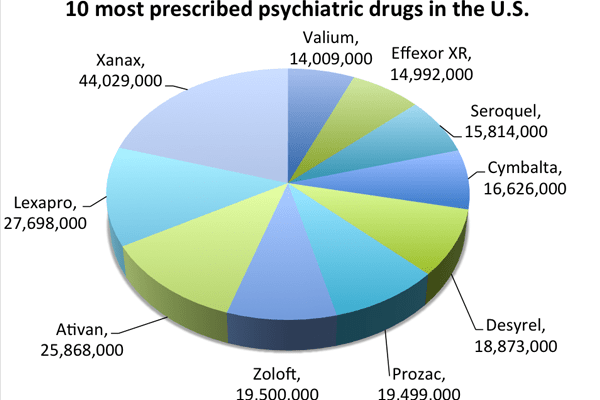
Image Source: Neuroamer
Every day people are suffering from depression and numbers are overgrowing.
Most people aren’t aware of a different kind of treatment available for Anxiety and Depression. Rapidly, growing population and developing technology has increased the workload and eventually, leading to anxiety disorders and depression.
The rate of developing anxiety and depression is rising every day driving deaths. Chronic depression has a devastating impact on emotional and physical health which put our lives at risk.
Day by day the number in drug addiction is increasing. People are having trouble performing a routine task; the family relationship is getting disturbed and facing social isolation due to Anxiety and depression disorders.
Anxiety and depression require early diagnosis and proper treatment to get rid of diseases. The method of prevention should be adopted, and one mustn’t get involved in abusive activities. “Depression is illness, not a choice.”
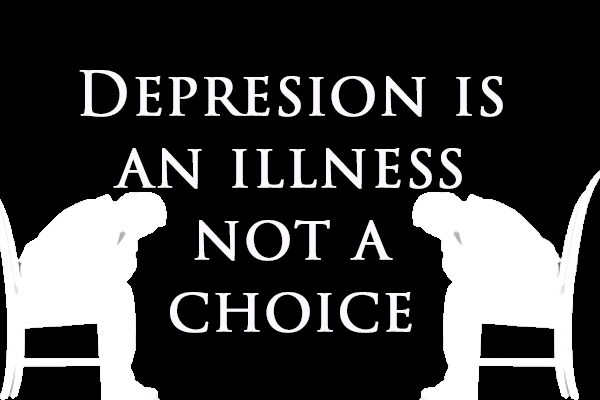
Image Source: troyt84
Depression and anxiety are a worldwide concern and these need to be eradicated.
Related Article: 13 Natural Ways To Cure Diabetes At Home
Recent News
-

Duane Chapman Is Now Engaged To Girlfriend Francie Frane, Had Lost Wife 10 Months Earlier
-

Katherine Schwarzenegger Pregnant With Her First Child With Husband Chris Pratt
-

Chris Cuomo's Son Mario Tested Postive For Coronavirus
-

Kodak Black And NBA YoungBoy, Dissing One Another Via Social Media
-
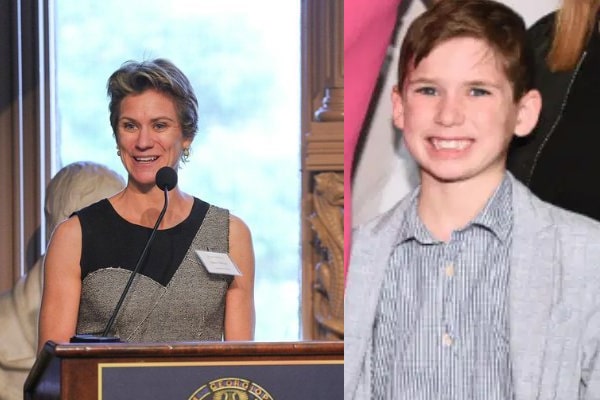
Maeve Kennedy McKean, Robert F. Kennedy's Granddaughter, is Missing Along With Her Son
Entertainment
-

The Evolution of Entertainment: Online Casting Calls Redefining the Industry
-

Mamoudou Athie's Must-Watch Performances in the Movies and TV Series
-

Try These Unique Forms of Entertainment When You've Exhausted All Options
-

7 Best Movies on Netflix This Week
-

Campus Grooves: Exploring Music Festivals in American Colleges
